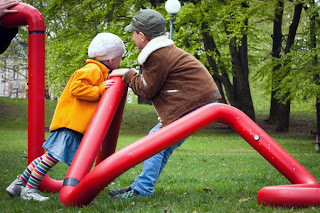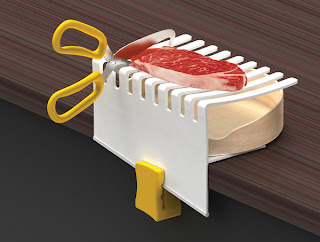The Coffee Lover’s Guide To Tea

Coffee is great, but even die-hard coffee lovers might want to give tea a chance. The other beloved warm beverage, tea imparts to its drinkers some formidable health benefits, an extra boost of alertness without the same caffeine slump of coffee, and more variety. Here’s how to get started enjoying the best possible tea.
Why You Should Be Drinking Tea
 Tea’s health benefits: Although coffee has been linked to some health benefits such as lower risk of certain types of cancer, there are also some negative effects associated with coffee, such as caffeine dependency. Deep down inside, heavy coffee drinkers suspect there is such a thing as too much coffee.
Tea’s health benefits: Although coffee has been linked to some health benefits such as lower risk of certain types of cancer, there are also some negative effects associated with coffee, such as caffeine dependency. Deep down inside, heavy coffee drinkers suspect there is such a thing as too much coffee.On the flip side, a great many more studies have attributed health benefits to tea, from reducing cancer risk to preventing obesity, and very few have proven negative tea-drinking effects (you can see a comparison of these two drinks’ health benefits in this infographic.)

Alertness without the caffeine crash: Tea can provide you with that alertness that coffee is known for — without the later caffeine slump or drop. Both drinks contain caffeine, but they vary in their amounts of caffeine (in general, coffee has more caffeine per cup than tea, but this can differ by tea varietal. In The Book of Coffee and Tea, Joel, David and Karl Schapira say that the extraction of coffee is nearly complete in the brewing of coffee, whereas a five-minute infusion of tea extracts only three-quarters of the caffeine).
Aside from the concentration of caffeine in a cup of coffee versus tea, there’s a difference in the way the caffeine in tea affects you compared to the caffeine in coffee (much like caffeine’s effects vary depending on genetics and other factors). One source, citing a coffee and tea industry publication, says that the other chemical compounds in coffee and tea — besides caffeine — can either enhance (in coffee’s case) or mute (in tea’s case) the effects of caffeine. The beneficial antioxidants, polyphenols, in tea may make the body absorb caffeine differently, over a longer period of time. So, while you might have to stop drinking coffee by noon to avoid sleep problems, you probably can go on drinking tea the rest of the day with no ill effects.
You’ll never get bored: Last but not least, tea is an exquisite and varied drink, ranging from the very subtle white teas to unique flavoured teas to more astringent black teas. If you enjoy experimenting with different coffee varietals’ tastes — pitting the acidic Guatemalan coffee beans against smoother and fuller-bodied Sumatra coffee — tea can provide you that wide world of exploration too… and then some.
What Teas To Drink?
Black teas in general may be better suited for coffee lovers because they have a stronger taste, but here are some more specific suggestions for teas that could suit your palate:
For bright teas to wake you up: Try some of the so-called “breakfast teas” like English Breakfast or Irish Breakfast. These are a blend of strong-tasting black teas, though there’s no consensus between one tea provider or another on what a breakfast blend consists of. Many Irish Breakfast teas use Assam tea leaves (tea from the Assam district in India), which produces a tea that is “pungent, malty tasting, and full-bodied and looks unusually dark,” according to James Norwood Pratt’s Tea Lover’s Treasury. The breakfast tea may make a nice alternative if you drink coffee for it’s eye-opening qualities.
Tea made from yerba mate, while not technically tea because it’s made from a plant other than Camellia sinensis, has a high caffeine concentration, perhaps even more than coffee, as well as potential antioxidant and anti-inflammatory health benefits. Photo by Andrew.

For distinctive flavours : No tea will replace the way coffee tastes, but if you want something more unusual and stronger than, say, the Lipton variety, consider Earl Grey, Lapsang Souchong or Genmachai.
Earl Grey is a wildly popular and unique-tasting tea scented with the oil of bergamot. In general, Earl Grey teas are mild-flavoured and have a delicate scent, yet are at the same time quite distinctive.
Likewise, Lapsang Souchong is a love-it-or-hate-it sort of tea. It tastes like smoke (and is scented and flavoured with smoke). The tarry taste of this “manly” and dark tea may be an option for you if you think tea is too weak-tasting compared to coffee.
If you like nutty coffees like some Guatemalan coffees or nut-flavoured coffees (e.g. hazelnut coffee), you might enjoy Genmaicha, a Japanese green tea that adds roasted brown rice to the infusion for a stronger flavour often described as “popcorn-like”. Photo by Robin.

For balanced, healthy teas: Perhaps you don’t want a tea that matches coffee in its strong flavour, but is just a good plain tea. If you like the tea you usually get at Chinese restaurants, try Oolong tea, a cross between lighter-flavoured green and stronger black teas. Oolong has been called the “champagne of teas” and is characteristically a smooth, all-around refreshing tea. Photo by J Wynia.

For enjoying the ritual of the brew: If you enjoy the coffee-making process — e.g. brewing in a French press and watching the coffee grinds bloom — consider flowering teas. Flowering teas are hand-picked and hand-sewn tea leaves that unfurl and look like a blooming flower when brewed. They emphasise the art of making tea and the enjoyment of tea beyond just taste. Photo by Heather Katsoulis.
How to Make Great Tea
The basics of how to make a better cup of coffee also apply to tea: freshness, water quality, temperature and timing.Freshness: Just as whole coffee beans that have been stored in a cool, dark place are best for making coffee, great tea should be stored as whole leaves (not grind into tea bags). The freshest, better quality teas are sold as whole leaf teas rather than crushed in tea bags.
Tea can last quite a bit longer than coffee when stored properly — as much as two years if not exposed to air, light, odour, heat or moisture; roasted coffee, by comparison, is best used within one to two weeks.
Water quality: Since both coffee and tea consist primarily (more than 90 per cent) of water, the quality of the water used to make these drinks is paramount. Start with fresh, cold water (not previously boiled or flat water), preferably filtered or bottled.
Temperature: Here’s where coffee and tea differ. The Specialty Coffee Association of America recommends a water temperature of 90C to 96C for coffee — just before boiling. For tea, the temperature depends on your particular varietal — white, green, oolong, black, herbal or rooibos teas. Black teas should be brewed just after boiling, while more delicate white and green teas should be brewed in temperatures below that of coffee (as low as 77C). In Pursuit of Tea has a basic brewing guide with temperatures for different teas, but you’ll want to defer to your tea dealer for the recommended time for your specific teas.
Timing: Depending on your method of brewing coffee, it takes about 3-6 minutes to brew. Steeping tea is pretty much the same — it depends on the type of tea you’re brewing. Some oolong teas should be brewed for seven minutes and can even be re-steeped, while more delicate teas like white teas will be brewed in as few as three minutes. Check the brew time for your specific tea; again, this basic brewing guide will get you started, but don’t be afraid to experiment.
Tools of the Tea Trade
You can use a French press or perhaps even an AeroPress to brew tea, but part of the pleasure of tea is the whole tea-making ritual. Consider investing in a nice teapot that reflects your sensibilities — English porcelain, Japanese cast iron, modern glass, etc — to upgrade your tea experience.Besides a pot to steep the tea in and some method of straining the tea leaves (usually built into the teapot), you really don’t need much. A water kettle for boiling water, some means of timing the tea as it steeps (e.g. one of these top Windows timer applications), and the container are pretty much all you need.
Additional resources
There are a great many more types of teas, so your best bet is to explore. Here are some additional resources for exploring the world of tea:- Types of tea and their tea benefits from WebMD
- The Republic of Tea’s Citizens’ Tea Library, with basic tea varietal information
- Adagio teas tea of the month club for discovering different types of teas as a monthly subscription






















